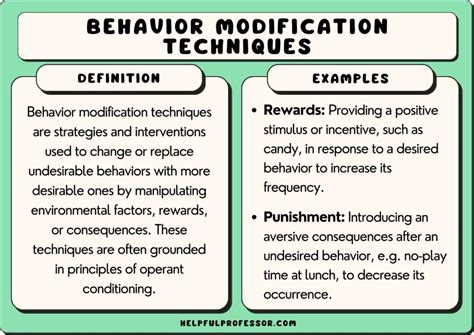Introduction
The bond between humans and their pets is unbreakable, but sometimes, unruly behavior can strain this relationship. Fortunately, advancements in pet behavior modification techniques are revolutionizing the way we interact with our furry companions. Embark on a journey to explore the latest and most effective methods, empowering you with newfound control and harmony in your pet’s world.

Behavior Modification 101: Understanding the Underlying Causes
Before embarking on any modification techniques, it’s crucial to delve into the root cause of your pet’s behavior. Factors such as genetics, breed, past experiences, and environmental triggers can all influence their actions. By unraveling these underlying dynamics, you can tailor a personalized approach that addresses the specific needs of your pet.
Non-Aversive Techniques: Rewarding the Good, Ignoring the Bad
Positive reinforcement is a cornerstone of modern behavior modification. By rewarding desired behaviors with treats, praise, or affection, you encourage them to continue. Conversely, ignoring unwanted behaviors sends a clear message that they are not acceptable. This non-aversive approach builds a strong bond between you and your pet while reinforcing the desired outcomes.
Aversive Techniques: A Cautious Approach
In some cases, aversive techniques may be necessary to deter severe or potentially dangerous behaviors. These methods involve introducing a negative consequence, such as a loud noise or a spray of water, when the unwanted behavior occurs. However, it’s essential to use these techniques sparingly and only under the guidance of a professional trainer.
Case Study: From Destructive Biter to Gentle Companion
“Max, a once-uncontrollable Labrador, had a penchant for destroying furniture and biting strangers. Through a combination of positive reinforcement and limited aversive techniques, his behavior was transformed. Now, he is a well-behaved and affectionate member of the family.”
Innovative Tools: Embracing Technology in Behavior Modification
Advancements in technology are opening up new possibilities in pet behavior modification. Apps that track activity levels and provide personalized training plans; smart collars that emit calming pheromones; and even virtual reality experiences are being utilized to enhance the effectiveness of these techniques.
Future Trends: The Evolution of Pet Behavior Management
Looking towards 2025 and beyond, the future of pet behavior modification is poised to witness further innovation. Personalized training regimes based on artificial intelligence (AI) and DNA analysis will revolutionize the way we address behavioral issues. Additionally, the integration of virtual reality and augmented reality into training will provide immersive and engaging experiences for both pets and owners.
Expanding Market Insights: A Global Perspective on Behavior Modification
According to a recent study by the American Pet Products Association, the global pet behavior modification market is projected to reach $4.5 billion by 2025. This surge in demand is attributed to the growing awareness of pet mental health, the proliferation of pet ownership, and the availability of innovative training tools. Emerging markets in Asia and Latin America are expected to drive significant growth in the years to come.
Market Challenges: Overcoming Barriers to Effective Behavior Modification
Despite its advancements, pet behavior modification faces several challenges. Limited access to qualified trainers, financial constraints, and cultural beliefs can hinder the widespread adoption of these techniques. Addressing these barriers requires collaboration between animal welfare organizations, veterinary clinics, and pet owners to ensure that all pets have access to the care they deserve.
Conclusion: Empowering Pet Owners with a Path to Harmony
Pet behavior modification techniques are an indispensable tool for addressing behavioral challenges and fostering a strong bond between humans and their furry companions. By embracing the latest advancements and working in partnership with professionals, pet owners can unlock the full potential of their pets and create a harmonious home environment. As we venture into 2025 and beyond, the future holds endless possibilities for innovation and progress in the realm of pet behavior management.
Table 1: Non-Aversive vs. Aversive Techniques
| Technique | Pros | Cons |
|---|---|---|
| Non-Aversive (e.g., Positive Reinforcement, Ignoring) | Builds a strong bond; Humane and effective for most behaviors; Can take longer to see results | May not be effective for all pets; Requires consistency and patience |
| Aversive (e.g., Punishment, Negative Reinforcement) | Can be effective for deterring severe behaviors; Quick results | May damage the bond between pet and owner; Can increase anxiety and fear; Should be used sparingly and only under professional guidance |
Table 2: Innovative Tools for Pet Behavior Modification
| Tool | Benefits | Limitations |
|---|---|---|
| Activity Tracking Apps | Monitor activity levels, provide personalized training plans, and detect behavioral patterns | Require consistent use to be effective; May not be suitable for all pets |
| Smart Collars | Emit calming pheromones, track location, and provide feedback on training progress | Can be expensive; May not be suitable for all pets; Limited functionality in certain environments |
| Virtual Reality (VR) | Immersive training experiences, simulate real-life scenarios | Relatively new technology with limited research; Can be expensive; May cause motion sickness in some pets |
Table 3: Market Insights on Pet Behavior Modification
| Region | Market Size | Growth Potential |
|---|---|---|
| North America | $2.2 billion | Moderate |
| Europe | $1.5 billion | High |
| Asia-Pacific | $750 million | Very High |
| Latin America | $125 million | Very High |
| Rest of the World | $500 million | Moderate |
Table 4: Case Studies in Pet Behavior Modification
| Case | Pet Type | Behavior Issue | Techniques Used | Outcome |
|---|---|---|---|---|
| Max | Labrador | Destructive biting, aggression | Positive reinforcement, limited aversive techniques | Transformed into a well-behaved and affectionate companion |
| Bella | Doberman | Separation anxiety | Crate training, calming pheromones | Overcame anxiety and separation distress |
| Oliver | Cat | Litter box avoidance | Positive reinforcement, litter box relocation | Resolved litter box issues and restored house cleanliness |





















